10. To Kill a Mockingbird
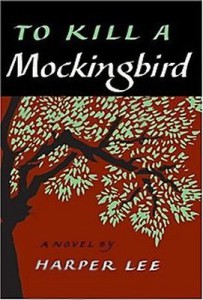
The Go Set a Watchman novel was written in the 50s and then left out. At the time, his editor asked Lee to focus on the flashbacks of his childhood hero. Since then he has been both a very well kept secret and a mystery furiously controversial since the revelation of its existence in February: was it an old version of Mockingbird?
Was it deemed unfit for publication at the time it was written in the 1950s? How was he a text found Lee and why she decided to publish it now, at the age of 89, after decades away from any form of attention or publicity?
The first chapter, released Friday by the Guardian in advance of the publication of the novel July 14 at midnight in bookstores, reveals a funny tone and dry immediately recognizable as that of the author of To Kill a Mockingbird.
The reader discovers Jean Louise struggling with two concerns, on the way to the house of his childhood. First her father Atticus, semi-god figure for Mockingbird Scout, but is now suffering. Then the question of whether she should marry her childhood friend or his brother.
The manuscript was discovered attached to an original typed Mockingbird, by Harper Lee‘s lawyer in a place that his publisher calls “safe place”.
About racial issues and how they are perceived half a century after it was written, his agent says the book “deals with more complicated problems, namely the vision of segregation by adults at the time . It is easy for children to consider all according to what is right or wrong, but they do not have all of these areas of conflict that we as adults see gray. ”
Dropped like a bomb on Friday, the first chapter is read by the soft husky voice actress Mud, Wild and other great vintages Reese Witherspoon (a new screen adaptation for after To Kill a shadow of 1962 ?) Unusually from an author, Lee herself describes his novel as “a production pretty good,” which must mean “excellent”, modesty aside.
Plot
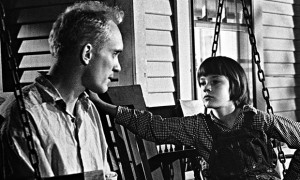 The story takes place on the way back from New York to the house of his childhood in Maycomb, to see his father Atticus, the hero of Lee’s novel of 1960, now 72 years old man sick.
The story takes place on the way back from New York to the house of his childhood in Maycomb, to see his father Atticus, the hero of Lee’s novel of 1960, now 72 years old man sick.
Jean Louise Finch – adored heroine of “one of the most beloved contemporary novels” – was embraced with enthusiasm, rejected a marriage proposal and revealed that one of the main characters in To Kill a Mockingbird was ailing in only a few pages of the widely expected second novel by Harper Lee, Go Set a Watchman. And since the first was literally translated as To Kill a Mockingbird, it is likely that it is translated without literary embellishment with “Go, set a watchman,” directly inspired by the Old Testament (Isaiah 21: 6).
Jean Louise is now an adult. “She was changed from a generally surly creature and mastering the art of the trigger, at a reasonable facsimile of a human being … His approach was always that of a 13 year old boy and repugnant to any feminine attitude .. . It was easy to look at and easy to live most of the time, but it was not easy in any sense, “writes Lee in the opening of Go Set a Watchman.
“ The hundred best books of all police time ”
The novel will be released on July 14th and is already now the top seller on the Amazon site, where it can be ordered in advance.
The character of Tom Robinson Lee was inspired by several people. When Lee was 10, a white woman accused a black man, Walter Lett of raping her. The case and the trial were followed by the local newspaper of the father of Lee. Walter Lett was convicted and sentenced to death but his sentence was commuted to life imprisonment after the discovery of the letters innocentaient. He died in prison in 1937.
Lee has also been inspired by the famous case of the Scottsboro Boys, in which nine young black men were accused of raping two white women. The character of Tom Robinson is also inspired by Emmett Till, a young black man murdered for flirting with a white woman in 1955 in Mississippi.
To Kill a Mockingbird occupies the 60th place in the ranking of the hundred best books of all police time set by the association of Mystery Writers of America in 1995.
9. The Girl on the Train

Formidably constructed and narrated this suspense lesson offers three great portraits of women face their demons. A page turner, great vintage.
We must rehabilitate the station novel. Paula Hawkins is also the first to take this passion for railway literature, both calibrated for a crossing of the Hexagon by train for a few RER stations. The title of his novel even airs of self-portrait: The Girl on the train. This is a title that could symbolize alone cinema Hitchcock – a woman, a loco and wagons, and that’s Strangers on a Train and North by Northwest that come to mind.
Novelist drives the point in the first sentence prologue: “Dear reader, we are all voyeurs.” The Window Syndrome courtyard, somehow, for one whose success thrilling thriller (translated into 42 languages) was bought by DreamWorks for an inevitable adaptation. But the relationship with Uncle Alfred’s it: Paula Hawkins is not blonde like the muses of the master of suspense, but red – finally, it would be enough of a dye and could totally play Kim Novak.
In good disciple of Hitch, she does not forget to keep a little secret: if you know that she was born in Zimbabwe – where she grew up – is not known, however, his birth year – a priori, 1972, but nothing is less certain.
In 1989, Paula left Africa for London and became a student of political science, philosophy and economics at Oxford. Such a course leads almost naturally to become a journalist, and so she pigera pages “eco” The Times, for fifteen years.
A Nook for This Summer Shiver: The Daughter of the Train, Paula Hawkins Sonatine
 “But I once worked as a maid in a Paris hotel, she adds. And I lived right next to a prison.” However, the literary desires itched long time, although this admirer of the work of Ryszard Kapuscinski did not really songeât to become a novelist. “Actually, becoming an author did not seem to be a very good career choice. But when in 2008 I was offered the opportunity to put their hands in the dough, I seized my chance.”
“But I once worked as a maid in a Paris hotel, she adds. And I lived right next to a prison.” However, the literary desires itched long time, although this admirer of the work of Ryszard Kapuscinski did not really songeât to become a novelist. “Actually, becoming an author did not seem to be a very good career choice. But when in 2008 I was offered the opportunity to put their hands in the dough, I seized my chance.”
This will not however be under his name, but under the pseudonym Amy Silver. Should we therefore consider The Girl of the train as his first real novel? The issue was quickly forgotten, from the first pages of this great vintage page turner.
Rachel’s life could be summed up in two hours: 8:04 ET 5:56 p.m. – namely the round trip of the train that takes him from the London suburbs to the capital and vice versa. His journey is punctuated, during a stop, for a look at a house near the railway, and its people, she calls Jason and Jess and she imagines (the routine) daily. It is necessary that Rachel – divorced and recently fired – handles mind, sometimes confused by some abuses ethyl.
“ Three great portraits of women face their demons ”
What is not surprise to learn that Jess day – which, in reality, is called Megan Hipwell – disappeared. Would she go with a lover? The spectator will then seek to know the truth. But it will also count on the testimony of Anna, who now shares the life of the former husband of Rachel …
“The idea of starting the train Girl comes from my trips between London and its outskirts explains Paula Hawkins. I loved watching the different buildings, trying to guess what the lives of their inhabitants. And I surprise myself ask what I would do if I were witnessing a shocking or surprising event. ”
Formidably constructed and narrated (beware of false pretenses and contradictions …) this suspense lesson primarily offers three great portraits of women face their demons. We then think of a cross between The Appearances Gillian Flynn, Laura Kasischke disorders and stories – they come back, inevitably – some great Hitchcock films. Vertigo first class in perspective.
8. The 7 Habits of Highly Effective People
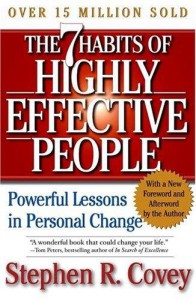
The Seven Habits of Highly Effective People, published in 1989, is a personal development book written by Stephen R. Covey. Sold over 15 million copies (2004) in 38 languages. The book lists seven principles that, if established as qu’habitudes, are supposed to help a person to effectively manage its daily and projects in all aspects of his life: professional, but also family and civic life. According to Covey, this requires essentially following certain universal principles and indeed timeless.
This similar approach to that found in practical psychology textbooks (Dale Carnegie, Aubanel, Marcelle Auclair, Pelman Institute …) however, wants associated with concrete technical support, especially roadmaps uses and written assessments synthetic.
Covey also wrote a number of suites and other derivative works such as Power of the Seven Habits; Seven Habits of Highly Effective Families; and Beyond the Seven Habits. The book following this one is The 8th Habit: From Effectiveness to Greatness published in 2004.
Chapters
Paradigms and principles: here, Covey introduces the foundations of the functioning of the human being in terms of habits. It explains how the human senses its environment, how he made his habits and how he can get to re-reprogram themselves in terms of habits. Private Wins: here Covey presents the first three habits needed to get a person’s dependence on the state of independence. Public Wins: here Covey has the following three habits to bring a person of the status of independence to interdependence state.
 Renewal: here Covey presents the seventh habit that invites the reader to start a self-improvement process.Unlike other books dedicated to the management of its activities, Covey does not hesitate to talk about the role of values and their implementation to achieve true personal balance. In contrast to many works dealing with values in the United States, indicates perfectly why these values can exist in a context other than religious if necessary.
Renewal: here Covey presents the seventh habit that invites the reader to start a self-improvement process.Unlike other books dedicated to the management of its activities, Covey does not hesitate to talk about the role of values and their implementation to achieve true personal balance. In contrast to many works dealing with values in the United States, indicates perfectly why these values can exist in a context other than religious if necessary.
A chapter is devoted to each of the patterns, which are represented by the following imperatives:
- Be ProActive: In Being proactive Covey recommends an attitude of initiative, control of his life and puts this attitude opposite to the position of “responsiveness”, where we find ourselves inevitably controlled by the the world around us.
- Start with a set objective: Chapter Start with the goal in mind why they should set long-term goals based on “true north principles.” Covey recommends formulating his “personal mission” to put in writing their own life goals.
- Start with the basics: how to be effective every day focusing on what really matters vis-à-vis long-term goals. This chapter is the subject of a schedule book First things first. This is the time management, what is IMPORTANT compared to what is URGENT. How not to get trapped by the emergency and keep moving towards what is important?
- Think Win + Winner: In chapter Think win-win, Covey describes how to develop a winning human attitude by negotiating win-win solutions for yourself and for other people to feed long-term win-win relationships.
- Seek to understand first of all, only then to be understood: how to communicate effectively with a person full of emotions and needs, including that of being understood and to be validated by another human. Covey describes empathic listening as the basis of a complete two-way communication, previews necessary for the human for him to finally be open to others’ ideas.
- Synergize: why and how teamwork brings results far beyond the sum of the results of each individual (process called dialectical philosophy).
- Sharpen the saw: In Sharpen the saw, finally Covey explains the value of taking time to sharpen yourself a habit of self-education in order to continue their personal development and achieve its objectives. It also sports, relaxation … take care of itself: his body, his mind, his mind.
The book has been criticized as over-intellectualizing the philosophy of management. Other critics question the relevance of these concepts (first edition in 1989) in our rapidly changing world. However Covey insists that these habits remain fundamental, since it believes that these concepts are universal and timeless.
7. How to win Friends and Influence People
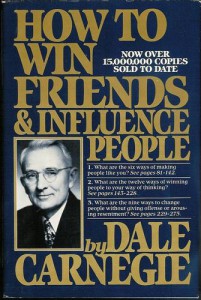
How to Win Friends … was published for the first time in 1937 and has since sold 16 million copies worldwide and is considered a classic if it is a founding staff development. For this reason, it ranks high in the list of Personal MBA. Note that this book was translated into French as “How to Win Friends and Influence People.” The impact part is probably worrying … In any case the title of the book is intended to challenge, and it works well.
Regularly updated by the author, this book suggests ways to:
– Make friends quickly and easily
– Convert others to our way of thinking
– Improve their conversational skills and become more entertaining
– Acquire new customers.
The book is easy to read because Dale Carnegie used many examples and written in a style similar to the conversation. Sometimes we may regret the almost exclusive use of such notions to pass.
“If you want honey, do not destroy the hive” The chapter begins with quotes from several major American criminals, including Al Capone, who at the time of his trial described himself as “a person who has spent the best years of his life to give people a good time and the lighter pleasures, and everything I harvest, is the existence of a man hunted and hated. ” Dale Carnegie used these examples to show that very few people in the world are able to criticize and to recognize their faults, regardless of the severity of their actions.
Dale Carnegie goes further by stating that the criticism is a futile process because it puts the person in a defensive situation, which grows to justify whatever happens, that strikes his pride, which offends his sense of his own importance, and that encourages resentment.
Make a Self-Criticism
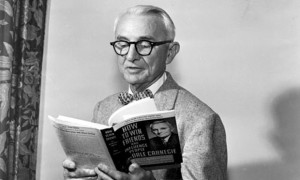 He cites an American psychologist and animal studies that show that they learn faster when he is rewarded for a good deed rather than only when they are punished for bad behavior.
He cites an American psychologist and animal studies that show that they learn faster when he is rewarded for a good deed rather than only when they are punished for bad behavior.
Dale Carnegie, resentment engendered criticism can demoralize people, they are our family, friends, employees or colleagues, without correcting the situation was convicted. People under the influence of criticism, will try to justify and will condemn us in return. The author therefore advises to make a self-criticism before starting to criticize others.
When it comes to dealing with people, the author advises well recall that the human is not a logical creature, but a creature of emotion, banded defects and motivated by pride and vanity.
It takes character to not be constantly in critical but Dale Carnergie quoted Carlyle: “A great man shows his greatness in the way of treating the little men.”
Dale Carnegie, God Himself Will Not Judge Men Before the End of Time. Why Should We Do It?
All these things are usually gratified, except one: the feeling of importance. The desire to feel important is one of the main differences between the human species and other animal species. It is this desire that makes us wear the latest fashionable styles, drive the latest cars, and talk about our brightest children.
History is full of famous people struggling for a sense of importance: Christopher Columbus would have him called “Admiral of the Ocean and Viceroy of India” or Catherine the Great who refused to open letters were not addressed to “His Imperial Majesty.”
One study showed that the most cited reason for the departure of a woman’s marital home was the lack of appreciation.
Dale Carnegie warns that it is possible to pretend flattering people to make them feel important, but it rarely works with an intelligent people minimum. The difference between appreciation and flattery is at the level of sincerity: one is sincere, the other is not. Do not be sincere may possibly work but generally have the effect of bringing us problems.
One of the most overlooked virtues in our daily existence is to compliment people when they realize a good thing.
This book is at the crossroads of personal development, communication and management. I find extremely relevant these words down on paper yet there 75 years! Probably because Dale Carnegie develops simple yet sensible ideas, as many tips, although apparently obvious, deserve to be stapled on the computer screen many people I’ve come across in the world the company.
This book is therefore an excellent base for those wishing to improve their relations with people in a personal or professional context and simply. Here, no complicated psychological profiles, but common sense tips that guarantee everyone to live better with others.
I suggest reading this book about his interesting and relevant, but for simplicity in shaping ideas: the examples are numerous and style is almost “conversational”.

